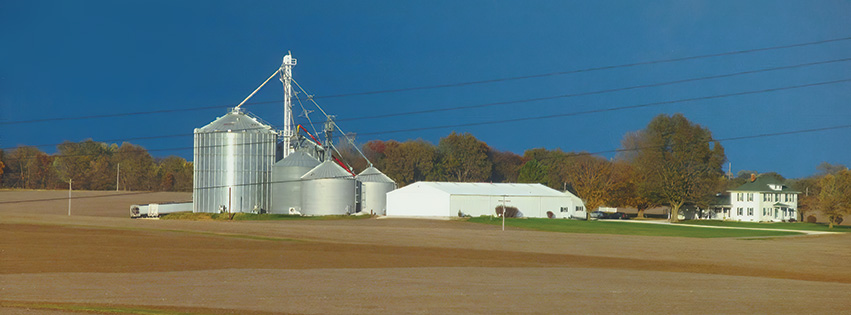Wrapping Up the Harvest

It’s December and we’ve already seen significant snowfalls. The first—back on October 31—melted quickly, and farmers were back harvesting a late-planted crop within a few days. So, how does this growing season stack up with previous years?
Another Late Harvest
This November was similar to last year—snowy, cold and generally wet—and we lost some local soybean fields due to those conditions. Why did we lose soybean fields in 2018? With multiple snowfalls in November, the snow settled on the plants and caused them to “lodge,” or fall to the ground. Instead of upright soybean plants, farmers had to deal with plants lying flat on the soil surface—which only last so long in the elements before they begin to rot and deteriorate. Given that experience, farmers were eager to harvest their soybeans prior to corn this year.
Soybean and corn seeds do not have to be completely dry at harvest, but they must be mature. Corn is physiologically mature when it has “black layered,” which references the area where the corn kernel attaches to the cob. If you look closely, you will see the tip of the kernel is black, signaling that all nutrient transfer has stopped. When this occurs, the corn kernel is slightly above 30 percent moisture content.
This year, much of the soybeans was harvested at 15 to 18 percent, while much of the corn was harvested with a moisture content between 25 and 30 percent. But to store soybeans and corn, the moisture level needs to be at 13 and 15 percent, respectively.
Drying Crops for Storage
Drying of these crops can be finished at the farmstead or at a country grain elevator, where large fans blow air through the seed. The cost is minimal for soybeans, which can often be dried using only this forced air, but corn is a different story. Corn that exceeds 18 percent moisture content will require heat with the forced air, which has led to a huge demand for propane this year. Local country grain elevators, where many farmers bring their crops, were scrambling to have propane delivered so they could dry the corn—at an added cost to the farmer. In many cases, farmers are paying $40 to $50 an acre to dry their corn, whereas during a normal year the cost would be $15 to $20 an acre.
Those silver, circular structures you see at farmsteads or local grain elevators are referred to as grain bins. The corn or soybean seeds are put into these storage structures through a hole at the peak of the roof. The seed then scatters evenly across the floor and begins to accumulate toward the top as more grain is put in.
The floor of the grain bin is perforated—picture a huge cheese grater and all of its holes—with an open space of approximately one to two feet between the perforated floor and a concrete foundation. A large fan on the outside of the bin draws air into this open space and forces it up through the floor and in between the seeds, which dries them. For corn, this air is first heated with propane or natural gas.
The money flowing through our economy is a revolving door. This year, it looks like the suppliers and transporters of propane will keep a larger slice of the pie. PM
- Log in to post comments

